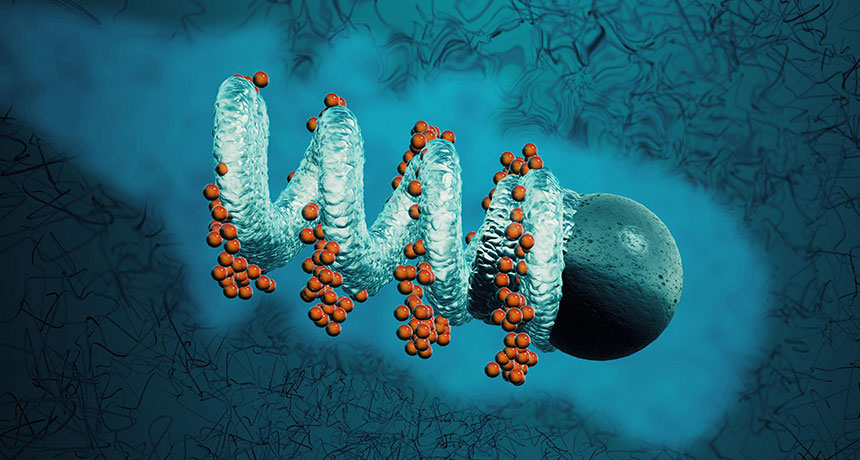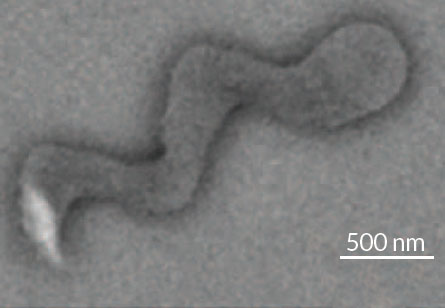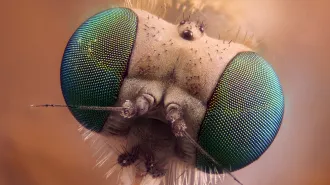To push through goo, use itty, bitty propellers
Tiny machines mimic the chemical action of ulcer-causing bacteria

POWERING THROUGH Inspired by the bacterium Helicobacter pylori, researchers designed microscopic, protein-coated propellers (illustrated) that can push through thick mucus.
Alejandro Posada








